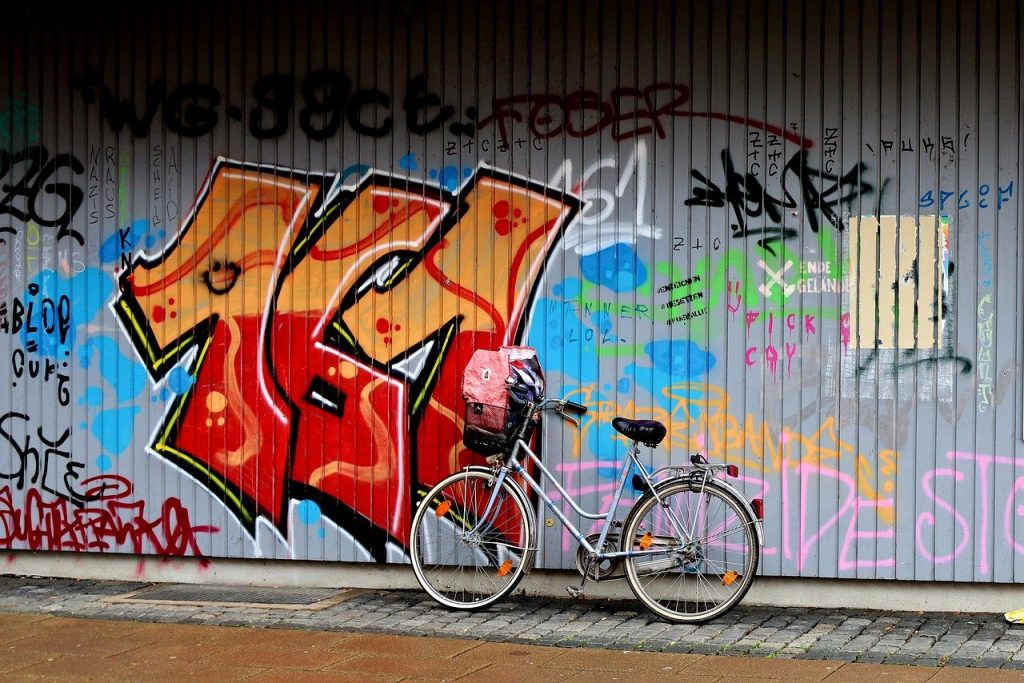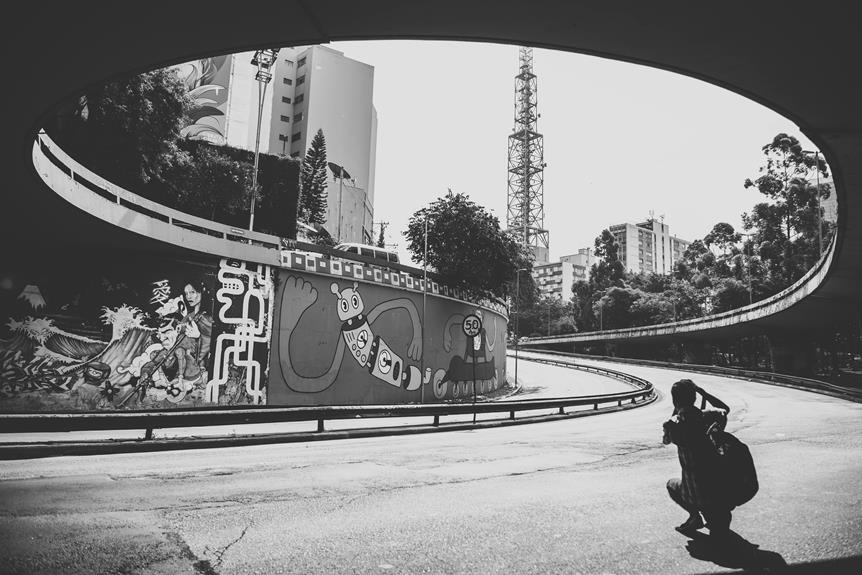Identity Art

Identity art critically examines the intricate layers of race, gender, sexuality, and cultural representation. Artists like Judy Chicago and Pope.L use their work to challenge societal norms and question historical inaccuracies.
The movement draws from civil rights and second-wave feminism, reshaping how identities are perceived and represented.
Techniques such as juxtaposition and fragmentation highlight the complexities of personal and collective identities.
By focusing on intersectionality and performativity, identity art disrupts fixed notions of who we are.
There’s much more to uncover in understanding how these artists convey powerful social commentaries and engage with evolving societal norms.
Key Points
- Identity Art explores race, gender, sexuality, and intersectionality, challenging societal norms and stereotypes.
- It critiques cultural heritage and representation, questioning historical depictions and their value.
- Self-expression in Identity Art provides social commentary on systemic disadvantages and imbalances in art history.
- Techniques like juxtaposition and fragmentation challenge traditional representations, revealing the complexity of modern identities.
- Future directions include digital explorations, intersectional narratives, and themes of environmental sustainability intertwined with identity discussions.
Key Themes in Identity Art
In Identity Art, the exploration of race, gender, sexuality, and intersectionality serves as a powerful lens through which artists challenge societal norms and stereotypes.
You’re invited to engage in a representation critique questioning how cultural heritage is depicted and valued.
Through self-expression, artists provide social commentary on the imbalances in art history and address systemic disadvantages.
By focusing on intersectionality and performativity, they reveal the complexities of modern identities and provoke critical reflection.
This process not only disrupts fixed identities but also encourages you to ponder the evolving nature of cultural identities and social norms.
Identity Art, consequently, becomes a dynamic platform for examining and redefining what it means to belong in contemporary society.
Influential Artists and Works
Recognizing the depth and complexity of identity, influential artists like Judy Chicago and Pope.L confront historical narratives and cultural representations through their groundbreaking works.
Chicago’s ‘Dinner Party’ champions female empowerment by spotlighting women historically omitted from mainstream narratives.
Similarly, Pope.L’s ‘The Black Factory Archive’ invites public engagement to explore blackness and cultural identity, challenging societal constructs.
James Luna’s ‘Artifact Piece’ critiques museum portrayals of indigenous cultures, while Candice Breitz’s ‘Rainbow Series’ examines post-Apartheid South African identities, questioning cultural representation.
Artists Mary Duffy and Cassils disrupt traditional modes of looking, asserting new perspectives on identity.
By addressing overlooked histories and stereotypes, these artists compel us to reconsider and expand our understanding of identity in contemporary art.
Historical Context and Movements
Emerging from the crucible of second-wave feminism and the civil rights movement, Identity Art confronts systemic exclusions in the art world head-on.
By challenging dominant norms and stereotypes, this movement serves as a form of social commentary and cultural critique.
Artists aimed to highlight marginalized perspectives, engaging in artistic rebellion against entrenched power structures.
Influenced by key thinkers like Frantz Fanon and Edward Said, they reexamined identity, critiquing Western cultural representations.
This critical reflection led to significant changes in museums, promoting diversity and intersectionality. Consequently, Identity Art reshaped contemporary practices by questioning white, male, and hetero-normative expectations.
It remains a powerful vehicle for expressing and validating diverse identities in an ever-evolving cultural landscape.
Styles and Techniques
Building on the profound cultural critiques initiated by Identity Art, the diverse styles and techniques employed by artists reveal multifaceted approaches to expressing and challenging personal and collective identities.
You’ll notice artists frequently use layering techniques to create depth and complexity, reflecting the layered nature of personal narratives.
By incorporating mixed media, self-portraiture, and personal artefacts, they blur the lines between the individual and the universal.
Techniques like juxtaposition, distortion, and fragmentation allow artists to challenge traditional representations of identity, engaging viewers in a dialogue about the fluidity and multiplicity of self.
Whether through realistic portraits or abstract concepts, these varied styles and techniques provide insightful commentaries on the intricate tapestry of human identity.
Future Directions in Identity Art
As Identity Art continues to evolve, artists are pushing boundaries by deeply exploring intersectionality and embracing fluid identities through innovative mediums.
Intersectional narratives are being crafted using digital explorations, allowing for more nuanced and dynamic portrayals of identity.
You’ll see artists leveraging technology to challenge traditional notions, creating immersive experiences that engage audiences on multiple levels.
Collaborative projects and community engagement initiatives are becoming pivotal, fostering a collective understanding of identity.
Additionally, themes of environmental sustainability are increasingly intertwined with identity discussions, reflecting a holistic view of our place in the world.
The future also promises a shift towards global perspectives and cross-cultural dialogues, enriching the discourse around identity and making it more inclusive and all-encompassing.
Frequently Asked Questions
What Does Identity in Art Mean?
Identity in art means you’ll see cultural symbolism and personal narratives that reflect the artist’s background and experiences. It challenges societal norms, offering you insightful perspectives and resonating with diverse audiences through meaningful, thought-provoking creations.
How Can You Show Identity in Art?
You can show identity in art by using self-portraits and symbolism to convey personal stories. Incorporate cultural representation through specific symbols, clothing, and colours to highlight your background and challenge societal norms.
How Is Identity Revealed Through the Arts?
You reveal identity through the arts by using cultural symbolism and personal narratives. By integrating these elements, you reflect unique perspectives and challenge societal norms, creating a rich dialogue about the complexities of identity and representation.
What Famous Artists Explore Identity Paintings?
You’ll find that famous artists like Frida Kahlo and Cindy Sherman explore personal and societal themes. Kahlo’s self-portraits focus on Mexican heritage and pain, while Sherman’s photos challenge gender roles and stereotypes through varied personas.
Conclusion
In exploring identity art, you’ve explored key themes that challenge and redefine societal norms.
You’ve seen how influential artists and works have shaped this genre, rooted in rich historical contexts and movements.
By examining diverse styles and techniques, you’ve gained insights into the multifaceted nature of identity.
Looking forward, it’s clear that identity art will continue evolving, pushing boundaries and offering fresh perspectives on what it means to be human in an ever-changing world.
Author: Diana Anderson

